 W
WHermeticism, or Hermetism, is a label used to designate a philosophical system that is primarily based on the purported teachings of Hermes Trismegistus. These teachings are contained in the various writings attributed to Hermes, which were produced over a period spanning many centuries, and may be very different in content and scope.
 W
WLullism or llullism is a term for the later philosophical and theological currents related to the philosophy of Ramon Llull. It also refers to the project of editing and disseminating Llull's works. The earliest centers of Lullism were in fourteenth-century France, Mallorca, and Italy.
 W
WAlchemy is an ancient branch of natural philosophy, a philosophical and protoscientific tradition that was historically practiced in China, India, the Muslim world, and Europe. In its Western form, alchemy is first attested in a number of pseudepigraphical texts written in Greco-Roman Egypt during the first few centuries CE.
 W
WThe anima mundi is, according to several systems of thought, an intrinsic connection between all living things on the planet, which relates to the world in much the same way as the soul is connected to the human body.
 W
WThe Arbatel De Magia Veterum was a Latin grimoire of Renaissance ceremonial magic published in 1575 in Switzerland.
 W
W"As above, so below" is a popular modern paraphrase of the second verse of the Emerald Tablet, as it appears in its most widely divulged medieval Latin translation: Quod est superius est sicut quod inferius, et quod inferius est sicut quod est superius. That which is above is like to that which is below, and that which is below is like to that which is above.
 W
WBibliotheca Philosophica Hermetica or The Ritman Library is a private Dutch library founded by Joost Ritman. The Bibliotheca Philosophica Hermetica brings together manuscripts and printed works in the field of Hermeticism, more specifically the 'Christian-Hermetic' tradition. It is located in the center of Amsterdam.
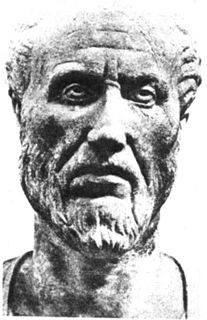 W
WThe Chaldean Oracles are a set of spiritual and philosophical texts widely used by Neoplatonist philosophers from the 3rd to the 6th century CE. While the original texts have been lost, they have survived in the form of fragments consisting mainly of quotes and commentary by Neoplatonist writers. They were likely to have originally formed a single mystery-poem, which may have been in part compiled, in part received via trance, by Julian the Chaldean, or more likely, his son, Julian the Theurgist in the 2nd century CE. Later Neoplatonists, such as Iamblichus and Proclus, rated them highly. The 4th-century emperor Julian suggests in his Hymn to the Magna Mater that he was an initiate of the God of the Seven Rays, and was an adept of its teachings. When Christian Church Fathers or other Late Antiquity writers credit "the Chaldeans", they are probably referring to this tradition.
 W
WThe Church of Light was incorporated November 2, 1932 in Los Angeles, California. Its mission is “to teach, practice, and disseminate The Religion of The Stars, a way of life for the Aquarian Age, as set forth in writings of C.C. Zain.” The Church is the continuation of an earlier initiatic organization, the Brotherhood of Light, established in the same city in 1915. The 1932 reorganization as The Church of Light was a response to ordinances passed that year by Los Angeles County “prohibiting both the teaching and practice of astrology.”
 W
WDruze are members of an Arabic-speaking esoteric ethnoreligious group originating in Western Asia. They practice Druzism, an Abrahamic, monotheistic, syncretic, and ethnic religion based on the teachings of Hamza ibn Ali ibn Ahmad and the sixth Fatimid caliph, al-Hakim bi-Amr Allah, and ancient Greek philosophers like Plato, Aristotle, Pythagoras, and Zeno of Citium. Adherents of the Druze religion are called The People of Monotheism (Al-Muwaḥḥidūn).
 W
WThe Garden of Cyrus, or The Quincuncial Lozenge, or Network Plantations of the Ancients, naturally, artificially, mystically considered, is a discourse by Sir Thomas Browne. First published in 1658, along with its diptych companion Urn-Burial, in modern times it has been recognised as Browne's major literary contribution to Hermetic wisdom.
 W
WManly Palmer Hall was a Canadian-born author, lecturer, astrologer and mystic. He is best known for his 1928 work The Secret Teachings of All Ages. Over his 70 year career, he gave thousands of lectures, including two at Carnegie Hall, and published over 150 volumes. In 1934, he founded The Philosophical Research Society in Los Angeles, which he dedicated to the "Truth Seekers of All Time", with a research library, lecture hall and publishing house. Many of his lectures can be found online and his books are still in print.
 W
WAbū Mūsā Jābir ibn Ḥayyān, died c. 806−816, is the purported author of an enormous number and variety of works in Arabic, often called the Jabirian corpus. The works that survive today mainly deal with alchemy and chemistry, magic, and Shi'ite religious philosophy. However, the original scope of the corpus was vast and diverse, covering a wide range of topics ranging from cosmology, astronomy and astrology, over medicine, pharmacology, zoology and botany, to metaphysics, logic, and grammar.
 W
WHenosis is the classical Greek word for mystical "oneness", "union" or "unity". In Platonism, and especially Neoplatonism, the goal of henosis is union with what is fundamental in reality: the One, the Source, or Monad. The Neoplatonic concept has precedents in the Greek mystery religions as well as parallels in Eastern philosophy. It is further developed in the Corpus Hermeticum, in Christian theology, Alevism, soteriology and mysticism, and is an important factor in the historical development of monotheism during Late Antiquity.
 W
WHermes Trismegistus is a legendary Hellenistic figure that originated as a syncretic combination of the Greek god Hermes and the Egyptian god Thoth. He is the purported author of the Hermetica, a widely diverse series of ancient and medieval pseudepigraphical texts that lay the basis of various philosophical systems known as Hermeticism.
 W
WThe Hermetic Brotherhood of Light was a Fraternity that descended from the Fratres Lucis in the late 18th century, and was the seed from which Ordo Templi Orientis (O.T.O.) was created.
 W
WThe Hermetic Brotherhood of Luxor was an initiatic occult organisation that first became public in late 1894, although according to an official document of the order it began its work in 1870. According to this document, authored by Peter Davidson, the order was established by Max Theon, who when in England was initiated as a Neophyte by "an adept of the serene, ever-existing and ancient Order of the original H. B. of L."
 W
WHermetic Qabalah is a Western esoteric tradition involving mysticism and the occult. It is the underlying philosophy and framework for magical societies such as the Golden Dawn, Thelemic orders, mystical-religious societies such as the Builders of the Adytum and the Fellowship of the Rosy Cross, and is a precursor to the Neopagan, Wiccan and New Age movements. The Hermetic Qabalah is the basis for Qliphothic Qabala as studied by left hand path orders, such as the Typhonian Order.
 W
WThe Hermetica are texts attributed to the legendary Hellenistic figure Hermes Trismegistus, a syncretic combination of the Greek god Hermes and the Egyptian god Thoth. These texts may vary widely in content and purpose, but are usually subdivided into two main categories:The "technical" Hermetica: this category contains a broad variety of treatises dealing with astrology, medicine and pharmacology, alchemy, and magic, the oldest of which were written in Greek and may go back as far as the second or third century BCE. Many of the texts belonging in this category were later translated into Arabic and Latin, often being extensively revised and expanded throughout the centuries. Some of them were also originally written in Arabic, though in many cases their status as an original work or translation remains unclear. These Arabic and Latin Hermetic texts were widely copied throughout the Middle Ages. The "religio-philosophical" Hermetica: this category contains a relatively coherent set of religio-philosophical treatises which were mostly written in the second and third centuries CE, though the very earliest one of them, the Definitions of Hermes Trismegistus to Asclepius, may go back to the first century CE. They are chiefly focused on the relationship between human beings, the cosmos, and God. Many of them are also moral exhortations calling for a way of life leading to spiritual rebirth, and eventually to divinization in the form of a heavenly ascent. The treatises in this category were probably all originally written in Greek, even though some of them only survive in Coptic, Armenian, or Latin translations. During the Middle Ages, most of them were only accessible to Byzantine scholars, until a compilation of Greek Hermetic treatises known as the Corpus Hermeticum was translated into Latin by the Renaissance scholars Marsilio Ficino (1433–1499) and Lodovico Lazzarelli (1447–1500).
 W
WThis is a comparative religion article which outlines the similarities and interactions between Hermeticism and other religions or philosophies.
 W
WBaron Emmanuel van der Linden d'Hooghvorst (1914–1999), was a Belgian writer, spagyric philosopher and alchemist.
 W
WHurufism was a Sufi doctrine based on the mysticism of letters (ḥurūf), which originated in Astrabad and spread to areas of western Iran (Persia) and Anatolia in the late 14th and early 15th centuries.
 W
WInitiation into Hermetics is the title of the English translation of Franz Bardon's first of three volumes concerning self-realization in line with the Hermetic tradition.
 W
WThe Layer monument is an early 17th-century polychrome marble mural monument erected in the memory of the lawyer Christopher Layer (1531–1600), and located in the Church of Saint John the Baptist, Norwich.
 W
WThe Layer Quaternity are four marble sculpture figurines approximately 25 centimetres (10 in) in height located on the two columns of the Layer Monument, an early 17th-century polychrome mural monument which was installed in the Church of Saint John the Baptist, Maddermarket, Norwich to the memory of Christopher Layer (1531–1600).
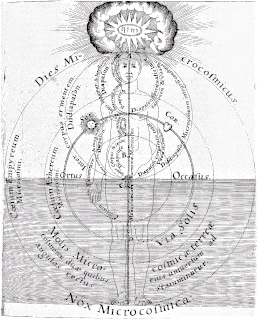 W
WThe microcosm–macrocosm analogy refers to a historical view which posited a structural similarity between the human being and the cosmos as a whole. Given this fundamental analogy, truths about the nature of the cosmos as a whole may be inferred from truths about human nature, and vice versa.
 W
WThe Monas Hieroglyphica is an esoteric symbol invented and designed by John Dee, the Elizabethan Magus and Court Astrologer of Elizabeth I of England. It is also the title of the 1564 book in which Dee expounds the meaning of his symbol.
 W
WEnglish physicist and mathematician Isaac Newton produced works exploring chronology, and biblical interpretation, and alchemy. Some of this could be considered occult. Also, Newton described himself as a "natural philosopher", and his work is grounded in Aristotelian metaphysics. Newton's scientific work may have been of lesser personal importance to him, as he placed emphasis on rediscovering the wisdom of the ancients. In this sense, some historians, including economist John Maynard Keynes, believe that any reference to a "Newtonian Worldview" as being purely mechanical in nature is somewhat inaccurate. Historical research on Newton's occult studies in relation to his science have also been used to challenge the disenchantment narrative within critical theory.
 W
WOrdo Aurum Solis is a Hermetic and Theurgic order founded in England in 1897 by George Stanton and Charles Kingold. It is a vehicle of the Ogdoadic Tradition, itself an important element of the Western Mystery Tradition. Ordo Aurum Solis is best known through the published works of two of its past Grand Masters, Vivian Godfrey and Leon Barcynski. Better known by their pseudonyms, Melita Denning and Osborne Phillips, the husband and wife team together authored many books that cover different aspects of magical practice, such as the Llewellyn Practical Guide to Astral Projection and Llewellyn Practical Guide to Creative Visualization, as well as their seminal work outlining the philosophy and practices of Ordo Aurum Solis: The Magical Philosophy.
 W
WIn classical, medieval, and Renaissance astronomy, the Primum Mobile was the outermost moving sphere in the geocentric model of the universe.
 W
WAli Puli, also known as Alipili, is the attributed author of a number of 17th-century alchemical and hermetic texts. However, his historical existence is doubtful, and A.E. Waite went as far as to describe the work attributed to him as "forgery pure and simple in respect of age and authorship [which] may be left to stand at its value in the matter of content."
 W
WRenaissance humanism saw a resurgence in hermeticism and Neo-Platonic varieties of ceremonial magic.
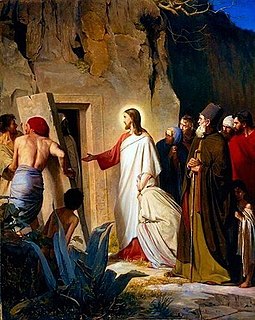 W
WChristian Rosenkreuz is the legendary, possibly allegorical, founder of the Rosicrucian Order. He is presented in three manifestos that were published early in the 17th century. These were:Fama Fraternitatis This manifesto introduced the founder, "Frater C.R.C." Confessio Fraternitatis The Chymical Wedding of Christian Rosenkreutz.
 W
WThe Rosicrucian Egyptian Museum (REM) is devoted to ancient Egypt, located at Rosicrucian Park in the Rose Garden neighborhood of San Jose, California, United States.
 W
WRosicrucianism is a spiritual and cultural movement that arose in Europe in the early 17th century after the publication of several texts that purported to announce the existence of a hitherto unknown esoteric order to the world and made seeking its knowledge attractive to many. The mysterious doctrine of the order is "built on esoteric truths of the ancient past", which "concealed from the average man, provide insight into nature, the physical universe, and the spiritual realm." The manifestos do not elaborate extensively on the matter, but clearly combine references to Kabbalah, Hermeticism, alchemy, and Christian mysticism.
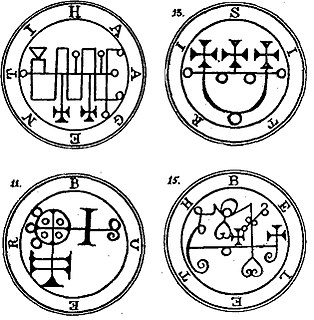 W
WA sigil is a type of symbol used in magic. The term has usually referred to a type of pictorial signature of a deity or spirit. In modern usage, especially in the context of chaos magic, sigil refers to a symbolic representation of the practitioner's desired outcome.
 W
WSocietas Rosicruciana in Anglia is a Rosicrucian esoteric Christian order formed by Robert Wentworth Little in 1865, although some sources acknowledge the date to be 1866-67. Members are confirmed from the ranks of subscribing Master Masons of a Grand Lodge in amity with United Grand Lodge of England.
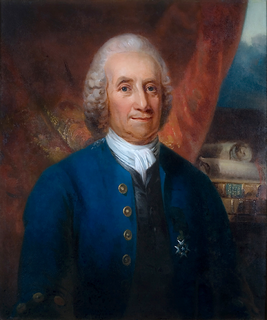 W
WThe Swedenborg Rite or Rite of Swedenborg was a fraternal order modeled on Freemasonry and based upon the teachings of Emanuel Swedenborg (1688–1772). It comprised six Degrees: Apprentice, Fellow Craft, Master Neophyte, Illuminated Theosophite, Blue Brother, and Red Brother.
 W
WTarot card reading is a form of cartomancy whereby practitioners use tarot cards purportedly to gain insight into the past, present or future. They formulate a question, then draw cards interpret them for this end. A regular tarot deck consists of 78 cards, which can be split into two groups, the Major Arcana and Minor Arcana. French-suited playing cards can also be used; as can any card system with suits assigned to identifiable elements.
 W
WThoth is an ancient Egyptian deity. In art, he was often depicted as a man with the head of an ibis or a baboon, animals sacred to him. His feminine counterpart was Seshat, and his wife was Ma'at. He was the god of the moon, wisdom, writing, hieroglyphs, science, magic, art, and judgment. His Greek equivalent is Hermes.